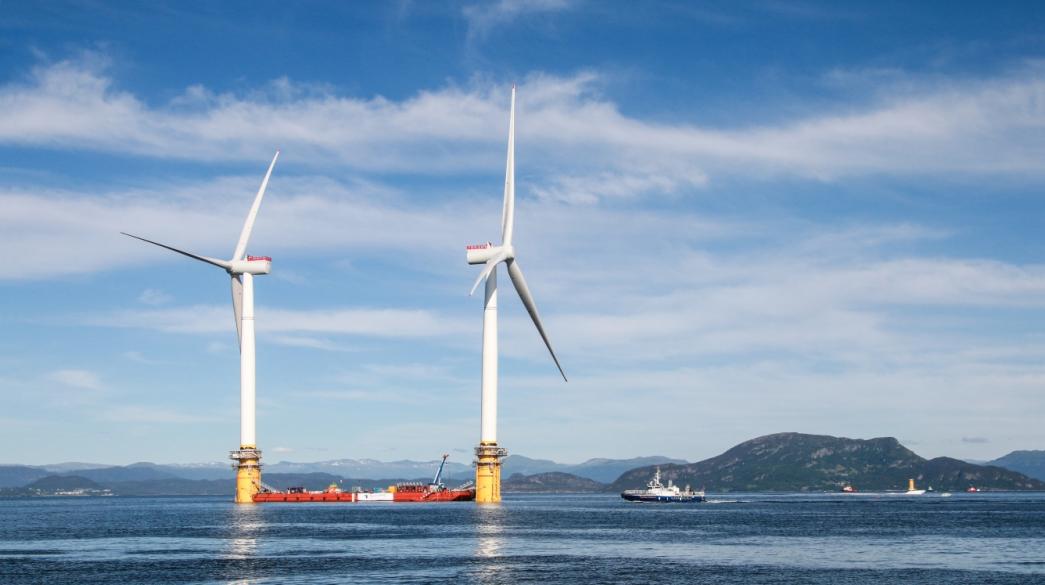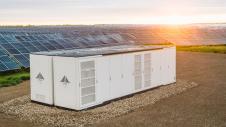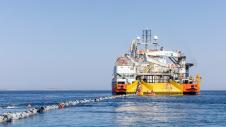Greece has taken action to add offshore wind parks to its energy mix, including them in the country's power plans, as giants in the sector, such as Norway's Equinor, express interest in tapping wind energy in the Aegean Sea.
The inclusion of offshore wind parks in Greece's future energy plan is only the first step as investors wait for changes to the law announced by Deputy Energy Minister Gerasimos Thomas, who has said that " to help simplify the operation and permits process for renewable energy sources (RES), we will take steps at the start of next year and in spring, as there are many outstanding issues blocking these investments."
Growth in wind energy is expected to be robust as the speed of wind around the world significantly picks up, according to research published by Nature Climate Change.
Researchers say that increased wind velocity will lead to a 37 percent increase in wind energy produced by 2024, reaching 3.3 million kilowatts. The speed of wind is seen continuing to pick up for the next ten years, before dropping off again, the report says.
Greece's landscape makes the country ideal to develop wind energy. In the last twenty years, wind parks with an average capacity of 140 MW were installed in Greece every year, bringing the total figure to 2.8 GW at the end of 2018. Prospects in the sector are seen as being very favorable for 2019, with a record 313 MW expected to be installed by the end of the year.
According to the vice president of the Hellenic Wind Energy Association, Socrates Konstandinidis, large investments need to be promoted in the field of wind energy. The inclusion of offshore wind parks in the country's energy plans is positive, he said, adding that the regulatory framework must be improved with an emphasis on how they will be included in the market and compensated for their services.
Space on land is limited as a bill tabled in parliament specifies that only 1 percent of highly fertile farming land can accommodate wind parks. This has resulted in an increase in interest for offshore units.
Large sea areas and strong winds make Greece the ideal spot for floating wind parks. Offshore units are suited to the Greek model as seas in Greece are deep and pose challenges for the construction of regular offshore models suitable for depths of up to 60 meters.
The Energy Ministry has launched a pilot tender to install an offshore wind park in the second half of next year. it will be installed in one of 12 areas that have been highlighted by the Centre for Renewable Energy Sources and Saving (CRES) in a 2010 study when the initial push for these projects took place.
There has been interested in floating wind park investments in Greece from a large US company, according to Energy Minister Kostis Hatzidakis, who has declined to name the company. The minister has also met with officials from Equinor, one of the largest companies in the sector worldwide, which is looking at installing a wind park in the sea area between Tinos, Mykonos, and Syros.
Norway's ambassador to Athens, Jorn Gjelstad, believes that floating wind parks can help make Greece a leading player on the world energy map. "They can help significant parts of the economy recover, such as shipping, shipbuilding, and industry," he told a recent workshop.
On a global level, offshore wind parks have made large progress since the first wind turbine was installed in a sea area off Denmark in 1991. Britain is leading the way, producing 34 percent of energy coming from floating wind parks worldwide, with five more large scale projects expected soon. One of these installations is Hornsea One, off the Yorkshire coast that will be completed in 2020 and will cover an area bigger than Malta.
Stefanos Tsoulakis









